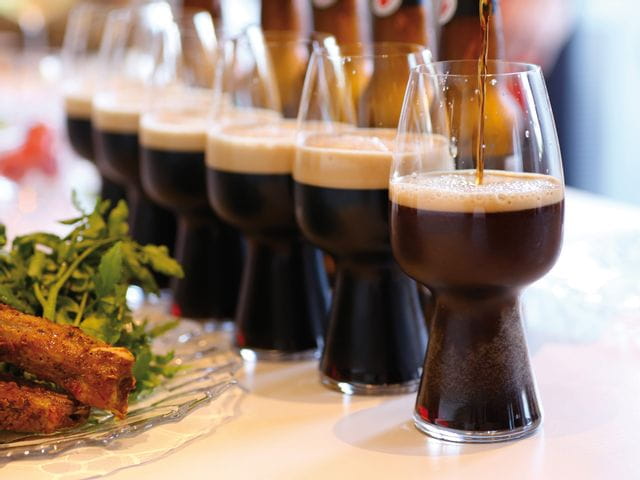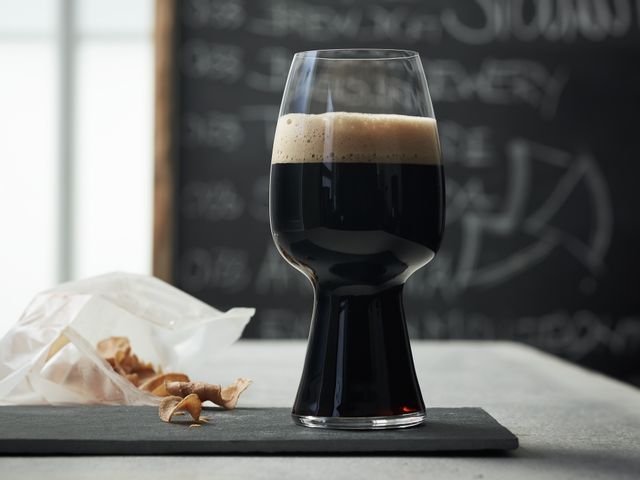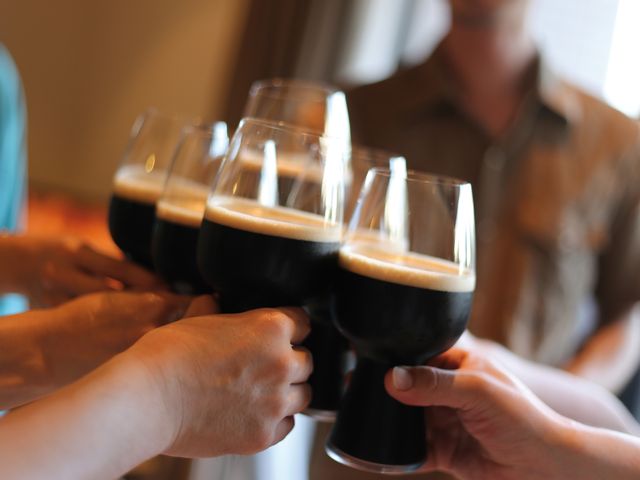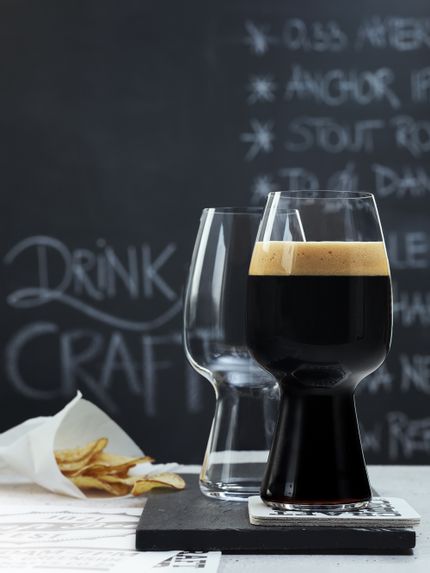A tale of evolution
The Story of Stout

Deep, dark, and malty, Stout stands out against other beer styles aesthetically and in its flavor. Thanks to its quality and the wide-reaching influence of Irish culture, Stout holds a special place in the hearts of beer enthusiasts around the globe and is firmly recognized as one of the world's leading beer styles. With all that in mind, how about we discuss Stout's origins and how it became so widely known and enjoyed?

Stout's origins
While Stout is now firmly associated with Ireland, its history actually goes back to the 18th century in England, where it emerged as a variation of Porter. Porter, a beer style made from brown barley, emerged in the early 1700s in London, where it was popular among the city's working class—a widely held theory being that Porter was named after the working porters in London who regularly drank it.
Later, during the same century, Porter started being exported to Ireland, where it proved to be a hit. As a result of its popularity in the Emerald Isle, a growing number of Irish brewers began making their own efforts at brewing Porter, including the famous Arthur Guinness, who was already brewing other beer styles by this time. Initially, Irish-brewed Porter was essentially just a more alcoholic version of an English Porter. It was referred to as Irish Stout Porter to distinguish it from its English namesake, with 'stout' being a term that referenced a stronger, more robust beer. However, in the 19th century, Irish Stout Porter began to develop its own distinctive style. Roasted and unmalted barley started being used instead of brown barley, leading to the beer exhibiting a defining deep, dark color profile that set it apart from English Porters.
Becoming a globally-recognized beer
Stout's evolution into a unique, standalone beer style was crucial in it becoming a world-famous beer. Irish Stout Porter became so renowned that, during the 19th century, the number of Stout Porter exports from Ireland to England surpassed the amount of Porter being exported from England to Ireland. With time, Stout Porter started being known simply as Stout, which led to the word 'stout' becoming synonymous with this beer style instead of referencing just any strong beer.
This wave of growth also saw the emergence of Guinness as a significant player in the Stout world and, subsequently, the beer world overall. From the mid-19th century onwards, the Guinness brand rocketed in popularity, first becoming the largest brewery in Dublin and, eventually, the largest beer brand in the world. While Stout goes far beyond Guinness, it's impossible to ignore the significance that Guinness played in establishing Stout as a globally renowned beer style.

Stout today
Today, Stout remains the third most-consumed beer style in the world behind Lager and Pale Ale. That's not bad going when you consider what an international phenomenon beer is and the variety of beer styles that exist! Guinness remains the largest Stout brand in the world and one of the biggest global beer brands full-stop.
Gone are the days when Stout production was solely in Ireland. You can now find Stout brewers worldwide, including in the United States, Canada, Australia, New Zealand, Belgium, Germany, Brazil, Japan, and many others. However, if you wish to keep your Stout Irish, there are still a wealth of Stout breweries there, including large commercial breweries and smaller craft breweries. Wherever you choose to get your Stout from, you won't be short of options!
Stout sub-styles
Throughout this blog, we've used the term 'Stout' as an all-encompassing term, but these days, there is actually a wide variety of different types of Stout available.
For many of us, when we hear the word 'Stout,' our minds immediately dart to Dry Stout/Irish Stout. This is the style you get when you ask for a Guinness at the bar, and it is distinguished by its use of roasted, unmalted barley and malts which deliver a sharp coffee bitterness with chocolate notes. However, to experience the full spectrum of Stout beers, you can also try the following types of Stout:
- Milk Stout uses lactose sugar during the brewing process to create a sweeter beer - hence the name. This addition also gives Milk Stout a distinctly creamy mouthfeel, making it a particularly drinkable Stout style for many. This style first arose at the start of the 20th century and enjoyed initial success before dropping off in popularity as the century progressed. However, Milk Stout has enjoyed a revival in the 21st century thanks to the craft beer movement and is now widely available in shops and pubs.
- Like Milk Stout, Oat Stout was also developed early in the 20th century. This Stout style involves adding malted oats to the brewing process, giving the beer a distinct nutty flavor.
- Imperial Stout was developed in London during the 18th century when a brewery was tasked with exporting some to the court of Catherine II of Russia. Imperial Stout is defined by its high ABV, which is often above 8%, and typically features intense sweetness and distinctly dark chocolate or coffee flavors.
- Oyster Stouts, which actually contain oysters, were developed in the 20th century when Stout sales had been in decline. This style involves adding oysters to the brewing process, which gives the Stout a salty quality along with notes of caramel.

Using the right beer glass for your Stout
With such rich, pronounced characteristics following years of fine-tuning, Stout deserves to be enjoyed at its best. In 2014, we introduced the Spiegelau Stout Glass to do just this.
After prototyping hundreds of glass shapes working in collaboration with Left Hand Brewing and Rogue Ales, our expert panel selected the design that best accentuated the roasted malt, rich coffee, and chocolate notes that define the stout beer style. And, with its elegant curved design and trademark Spiegelau crystal structure, it does it in style.
It's been a long journey for Stout from its humble beginnings as London Porter. With Stout breweries worldwide, an iconic brand in Guinness, and a place as the flagship beverage of the ever-popular St Patrick's Day, we'd say this journey has been quite the success.
SHOP
Spiegelau Craft Beer Glasses
Locations
